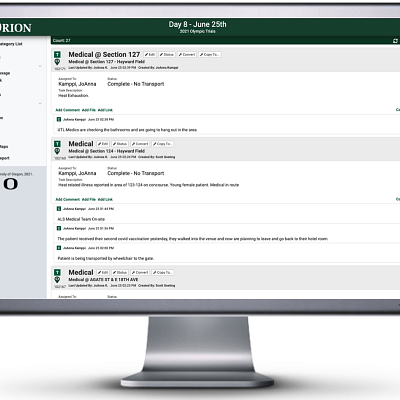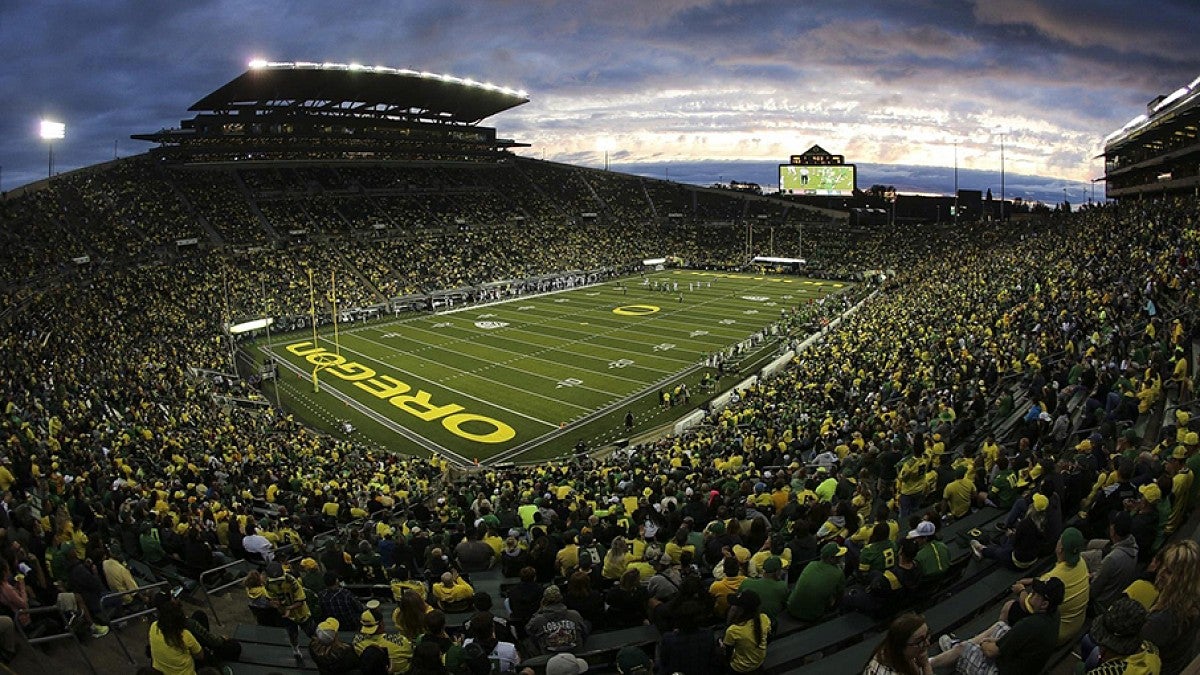Over eight days in June, hundreds of athletes and thousands of fans returned to the reimagined Hayward Field for the 2020 US Olympic Team Trials.
While the marquee event delivered plenty of the drama on the track, the goal for the event’s public safety organizers was the exact opposite: a swift, well-coordinated and efficient response to any and all potential incidents that might occur.
For a multifaceted safety and security effort that involves many local, state and federal partner agencies, in addition to primary organizer TrackTown USA, the UO’s own public safety staff, as well as private security contractors, effective real-time communication and situational awareness is critical.

Part communications center, part notification tool, part interactive map, the ORION system is a single, online dashboard designed to enhance communication and decision-making in response to incidents during any type of large event.
“Typically, 90 percent of public safety work during a major event can be solved or assigned in minutes if an incident commander has the necessary information at their fingertips and is able to quickly act on it,” said Andre Le Duc, the UO’s chief resilience officer and associate vice president. “That was our driving vision as we conceived and built ORION.”
ORION’s predecessor, Mongoose, was originally rolled out for the 2012 Olympic Trials. ORION, a more sophisticated version, has been regularly deployed at large events on the UO campus since, including home football games, Le Duc said, but this year’s Olympic Trials was the most significant event where it’s been used so far.
The app builds on other homegrown UO web tools developed for different purposes, including intricate, interactive campus maps built through a geographic information system and an online task tracking system for facilities repair and concerns.
“This isn’t just a one-off,” said Ken Kato, director of the UO’s Location Innovation Lab and Campus GIS and Mapping Program. “Conceptually, this is a part of a broader commitment from the University of Oregon to lead in the field of resilience and the innovation behind resilience.”
ORION has been improved through use and experiences over the years, Kato said, as well as suggestions from employees from across the university and outside partners.
During a typical day during the Olympic Trials, different users would log dozens of posts into the ORION system.
Topics range from daily situation and attendance reports to real-time reports and updates on incidents like drones entering the venue’s no-fly zone, health concerns among fans, or attempted unauthorized entries into the venue. Any authorized user can log something they witness or notice during the event, giving the dashboard an element of crowdsourcing.
Each incident can be pinpointed on a campus map for users who are less familiar with the local geography. Multiple layers of access to the dashboard allow users to share some information broadly, while more sensitive information can be restricted to smaller circles of incident responders.
The interface and functionalities are intentionally simple, however, Kato said.
“It’s not about complexity, it’s actually about simplicity,” he said. “What’s the simplest way that everyone stays on track and on the same page about the situation? If it’s not mission critical, we didn’t want to bake it into the cake.”
The ORION app has drawn interest from other universities, both in the Pac-12 and elsewhere, who’ve seen it used to successfully manage safety at football games and other events. That’s because the app fills a somewhat unique niche, Kato said.
“Tools already exist that excel at coordinating responses to these very large, regional disasters or incidents,” he said. “What ORION is meant for is this gap between normal, day-to-day workflow and the large-scale incident.”
Additionally, other incident response software tools haven’t been tailor-made to be used by a university, which also makes ORION appealing to other schools.
“Universities are unique animals in terms of how they’re organized,” Kato said, “How you run this little city is just different.”
The recognition from peer schools is welcome and could lead to the UO exploring ways to license the app software in the future, Le Duc said.
“I take great pride in the fact that our team at Safety and Risk Services can help manage marquee events on the national and even international stage using web products that we’ve conceived and developed completely in-house,” he said.
–By Saul Hubbard, University Communications


